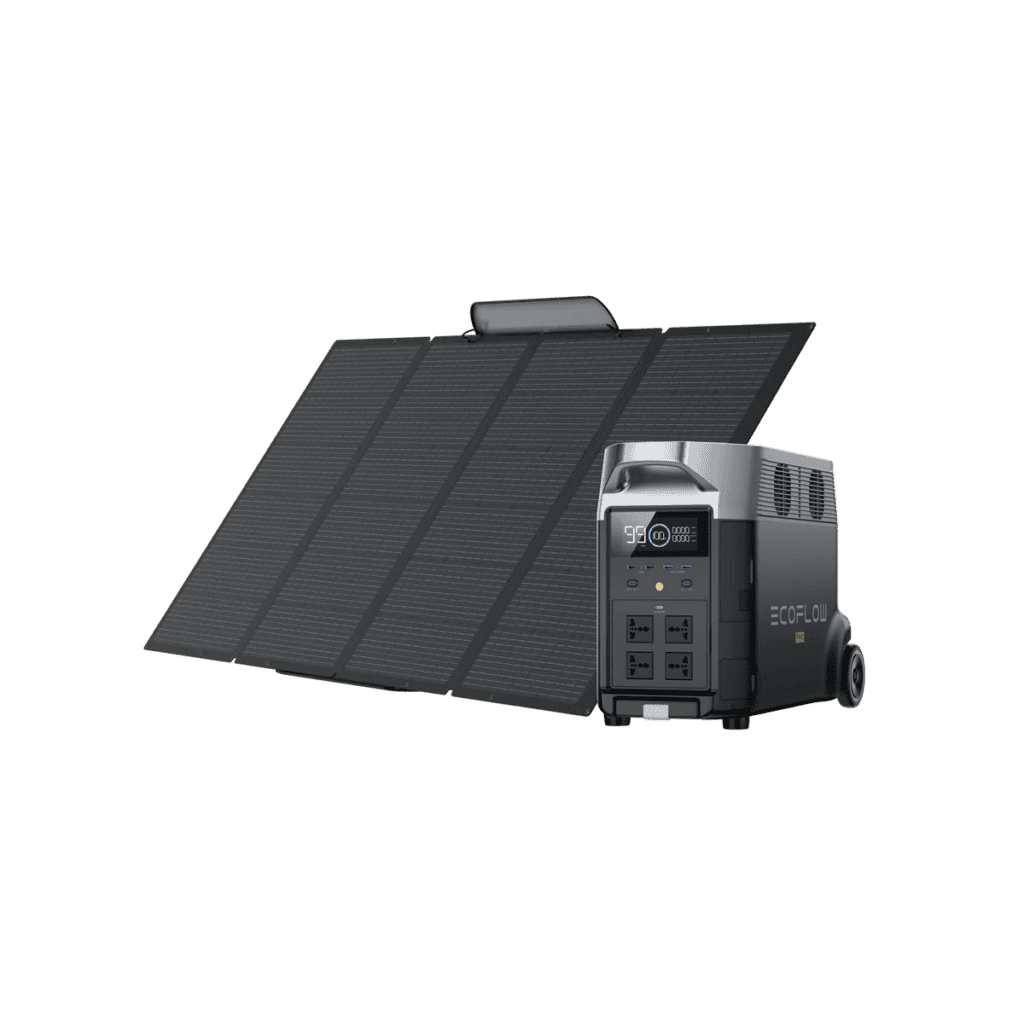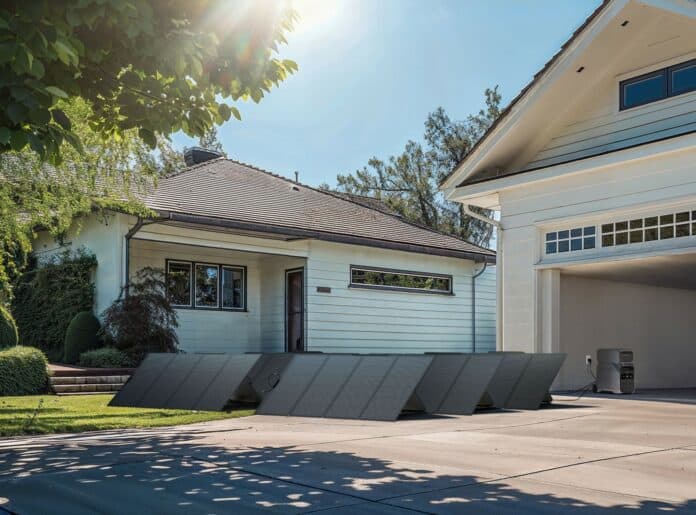Table of Contents
Solar energy is one of the fastest-growing energy sectors in the world, and for good reason. All the advances in solar panels, also called photovoltaics or PV, have made them more efficient and affordable than ever before.
The electricity they produce is completely renewable as long as the sun still shines, and it produces no greenhouse gases or other toxic byproducts while in use, making it clean and sustainable.
Read on to learn how this amazing technology produces clean electricity.
The Photovoltaic Effect
The photovoltaic effect is where the magic of solar power happens. It’s where incoming radiation from the sun in the form of photons, the basic unit of light, lands on solar panels, like EcoFlow Solar Panels. The photons impact semiconductor materials, usually silicon, in the photovoltaic cells, which causes them to release electrons.
Those electrons then flow in one direction and are either stored as DC electricity in a battery or directed into an inverter where the DC (direct current) is converted into AC (alternating current). This is the form of electricity used to power most household appliances and devices.

So, How Does Solar Energy Work?
With so many advances in photovoltaics, declining equipment prices, and so many great benefits to going solar, it’s no surprise that it’s one of the fastest-growing energy sectors in history.
Here, we’ll explore the steps involved in using solar energy from the sun to generate electrical power. Once you understand how it works, you can start looking into setting up your own solar system using one of EcoFlow’s DELTA series Solar Generators, with multiple options to satisfy everyone’s energy needs.
1. Sunlight Hits the PV Panels
Anytime the sun shines, the panels can generate electricity via incoming solar radiation in the form of photons, the basic unit of light. However, power generation is the greatest when the sun is directly above the panels, known as peak sunlight. This is why knowing how to install your panels at the best angle to get the most sunlight is important to maximise your energy production.
2. Electrons are Generated Via the Photovoltaic Effect
When photons from the sun hit the PV cells, the photovoltaic effect occurs. This is when the incoming photons interact with the semiconductor materials within the PV cells, causing them to release negatively charged subatomic particles called electrons. One easy way to think about the science of electricity is that it’s simply the flow of these electrons.
Different types of PV panels can be used, and they come in various convenient forms, like EcoFlow’s Rigid Solar Panels and EcoFlow’s Portable Solar Panels, which you can bring on camping trips or game drives. No matter which type of panel you use, they all use semiconductors and the photovoltaic effect to generate electrons.
3. Electrons Flow Into The Junction Box
Next, the electrons released from the semiconductors in the PV cells flow through the cells and along wires on the edges of the panel. From there, they flow as DC electricity into a junction box, usually located on the back of the PV module.
The junction box protects the internal wiring and other components, prevents the backflow of electrons into the panels so that they flow only one way, and directs the DC electricity into an external system.
4. DC Current Flows Into Battery or Inverter
Depending on the system, that DC current flows into a battery, where it is stored directly as DC electricity for later use, or it may flow into an inverter.
If you don’t have a battery backup, the DC current from the junction box will travel directly to the inverter. The inverter converts the DC into AC electricity, which is the form of power that comes from your household plugs and runs most household appliances and devices.
For off-grid systems or those with home battery backup solutions, the electrons enter the battery first, where they’re stored as DC electricity. This way, the battery keeps recharging, so you always have power when needed. When you plug an appliance into your battery, the DC electricity simply flows from the battery into the inverter before entering your home or appliances.
5. AC Current is Used to Power Appliances
Now that the DC has been converted into AC electricity via the inverter, it is ready to use. Again, how exactly that happens depends on your system.
Grid-Tied
If you have a grid-tied system and take advantage of net metering, where you sell excess energy back to the grid, the electricity you generate flows directly into the power grid through a meter that reads how much you put in.
Then, your household meter records how much you use, and the net result is that you either receive or pay money depending on the balance between your production and consumption.
The drawback of a grid-tied system in South Africa is that you are still subject to Eskom’s load-shedding blackouts.
Off-Grid
If you’re off-grid and use battery storage systems, you may have an EcoFlow Portable Power Station that contains the battery and inverter. The electricity flows from your battery into the inverter, and from there, it will either be used to power your appliances plugged into your power station directly or may flow into your household electricity if your power station is tied into your panel box.
In that case, you just plug your appliances into your wall outlets like you normally would. The bonus of off-grid systems is that you will still have power during a blackout, even though the rest of your neighbourhood will go dark.
Is Solar Energy a Clean Energy Source?
Solar energy is a highly sustainable clean energy system. While it requires materials and energy to create the PV cells and necessary components, the electricity it produces is 100% clean. It doesn’t contribute to climate change since it uses no fossil fuels to create electricity. It also produces no toxic fumes or other byproducts while generating energy, so it does not contribute to any other environmental pollution.
Recycling old panels is still a minor problem, as some areas have limited recycling facilities. However, since your new photovoltaics will last at least 25 years, by the time they are ready to be traded out for newer models, plenty of recycling options will be available, ensuring a completely clean and green energy solution.
Frequently Asked Questions
A solar system works via the photovoltaic effect, where incoming photons (light) from the sun activate semiconductors in the panels, causing them to release charged particles called electrons. Those electrons flow as DC electricity into a junction box. Then, it’s directed to an inverter to be converted into AC power used by household appliances.
Final Thoughts
Investing in solar power has never been more appealing than now, thanks to technological advancements, falling prices, and the growing need for renewable energy.
If you’re ready to make the switch to clean, green, affordable, and reliable solar energy, look into one of EcoFlow’s Solar Generators. With numerous options available, you will have no problem finding one to suit your energy needs. And the built-in battery backup means you never have to worry about load-shedding ever again.
